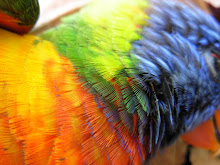Trees and Children: platanus orientalis

What I see through my window are trees in their youth. I see trees that are mere children, trees reaching out and finding their place. The photo above speaks of an arboreal giant and its attraction to parents and children alike. In days and cultures gone by, and somewhere still present, remaining and affirmed, ribbons and prayers were tied to such trees. It was thought that the trees, deeply rooted were teleportic in what they communicated between the earth and sky.
Touch wood, we hope and long to believe that our children might live as long as the trees they stand with. And similar, like such trees their genealogies might extend as long and as many as the branches that shade them. For deeply marked in the palm of our hands and marked into our fingers are an arboreal grip and traction, containing the markings of memory of our primate links and past. Our fingerprint traction and attraction for trees reminds us of our previous roles as former stewards, druids and guardians of glades and groves and wild places.
The tree that feeds us and gives us air and feeds upon our waste – the trees that bring oxygen to the soil and shades our skin from the sun are the same trees that provide us with shelter and wood for our fires. Trees we once revered as Gods now in many lands stand condemned as commodities as tokens and the spoil of our capitalistic creeds and no one counts the cost of all that we’ve lost and are losing.
Recently I began a conversation with a Tafe student - one working in a local supermarket who I rightly identified came from Malaysia. “You’re from a Chinese family aren’t you?” “Yes,” she replied. “And you study business?” I continued. “Yes,” she said, beginning to look at me with anxiety-filled eyes. “How do you know this?” she said. “Ah, so many overseas students from Chinese backgrounds study business” I told her. It was just a good guess.
“Which part of Malaysia do you come from?” I then asked. “Sabah” she said. “And your father has a business?” “Yes, he owns a palm oil plantation.” “Oh,” I said. “Oh,” and unable to help myself, I said – “Well there goes our rainforests.” And I knew there lurked anger towards her and her kind, but it was fleeting, for quickly a thought arose within as I stared into her eyes, for I knew that she was not unlike myself in that she was born a child of colonialism, and beheld to a generation and culture that valued only that which brought them capital. The salt encrusted lands of the wheat belt were once forests and I reminded myself, that these forests like their northern kindred rainforests had been raped, logged, profited upon and or destroyed. Similar too, had been the loss of such environments for the animals that lived there and the people, Indigenous peoples that had called these places home. I wished the student from Sabah well in her studies and left.
And now I return to the trees beyond my window who want nothing (although I can’t be 100 percent sure about this) but to share their oxygen and to provide the ground and lives beneath them with shade and respite from the sun and the occasional soaking of water and organic materials to enrich their roots.
What homage might they expect from us? I doubt they expect anything more than our respect that they are there and here – present amongst us. I sense we have much to learn from them – far more than they have to learn from us. I know deep down that they know that some of us admire them, but is that enough?


0 Comments:
Post a Comment
Subscribe to Post Comments [Atom]
<< Home